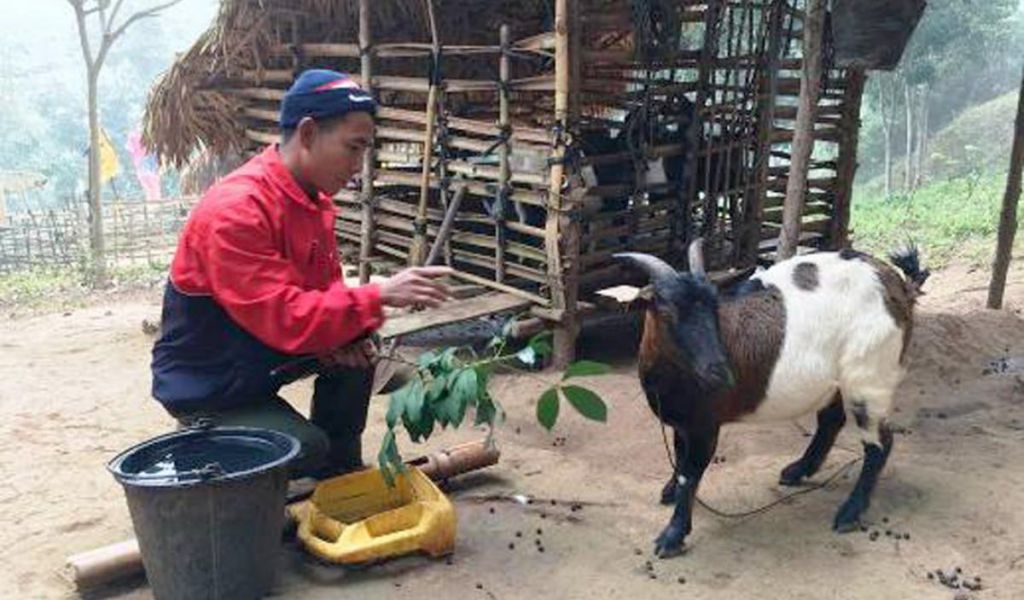NUOL's agriculture faculty gives boost to goat farmers

The faculty has produced more than 20 research articles on ways to improve agriculture in Laos alongside enhancing social and economic development. Most of these articles have concerned studies on goats, cattle and other animals.
A lecturer at the Faculty of Agriculture, Ms Daovy Kongmanila, said they were carrying out research into and writing textbooks on the rearing of goats. The faculty is working with the Swedish International Development Agency (SIDA), which is funding the publication of 500 textbooks on the rearing of goats. The two parties have been working together since 2016 on a project to upgrade livestock rearing and the production of textbooks, all with a view to making improvements in agriculture. The Faculty of Agriculture will give the 500 textbooks to agriculture offices in Vientiane and in Huaphan, Savannakhet, Vientiane and Borikhamxay provinces.
Ms Daovy said agriculture officials would run training courses for officials and members of the public, in the hope that more people in remote areas would successfully rear livestock. Goats can provide poor smallholder farmers with a steady livelihood and are particularly suitable for those who cannot afford to invest in cattle or buffalo because they require less space, inputs and capital. Building farmers' knowledge of healthy feed composition and animal care can increase goat productivity. Policymakers, academia and NGOs need to support goat farmers by broadening their knowledge through training, workshops and the provision of informative material, as well as introducing them to new techniques, in order to bring about a change in goat production practises. Building the capacity of technicians at the district level as well as local authorities in advising smallholder goat farmers on best practices on farm management is also important to transform goat production in Laos.
Goat production is an important source of both livelihoods and micronutrients to smallholder farmers. In 2018, it was estimated there were 545,270 goats in Laos. The government's goal is to increase meat exports to a value of US$50 million by 2020. Some 25 per cent of ruminants, including goats, are sold annually to Vietnam. But goat production in Laos suffers from low productivity. There is an increasing demand for goat meat and the current market price of goats in Laos is relatively high, ranging between US$4.4 and 5.6 per kg liv weight, higher than that of cattle and pigs. In addition, the export price in Vietnam, where a fourth of the annual livestock production is currently exported, is higher than in Laos, providing an opportunity for smallholder farmers to increase their incomes. This is particularly true for farmers in provinces bordering Vietnam, such as Savannakhet.
Goat production in Laos is generally associated with low growth rates, poor production, malnutrition and high morbidity and mortality rates due to poor feed composition and management practices. Goats are raised by traditional methods and feed on available native pastures such as grass and shrubs and have no feed supplementation, vaccinations or deworming. This means traditionally reared goats are susceptible to diseases and parasites, and feed shortages commonly occur in the dry season. Knowledge of feeding and management among smallholder goat farmers, as well as how to use available feeds of higher quality, is limited. More must be done to improve goat nutrition and health on smallholder farms to increase productivity.
Information source: Vientiane Times.
